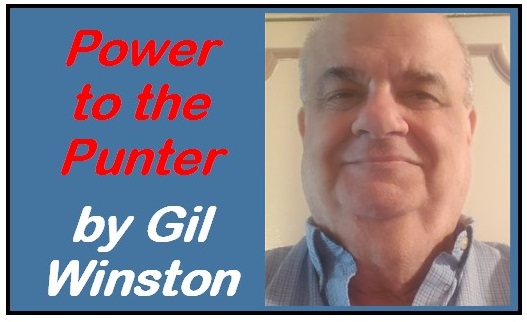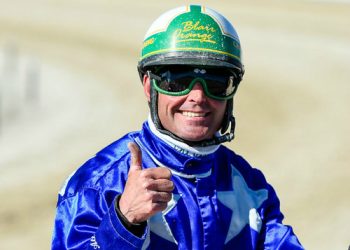A recent Harnesslink article by John Berry focused on the need to bring more owners into harness racing. To read John Berry’s column, click here.
As usual, John had a lot of great ideas. One focus of his was on the need for more partnerships. While we have a few harness racing partnership businesses, the partnership angle is very popular with thoroughbreds.
 Fractional ownership is a great idea. Fractional owners have little chance of making much money, but they are realizing a dream of being a part of the action with little investment.
Fractional ownership is a great idea. Fractional owners have little chance of making much money, but they are realizing a dream of being a part of the action with little investment.
One problem in our sport is attracting more owners. All we see is the act of preaching to the choir. Outfits that are running the partnerships are only advertising their businesses within the confines of harness racing publications, and frankly, the readership of those publications are overwhelmingly horse people. You are hard pressed to find harness racing devotees who are not part of the industry in one manner or another, and the “horseplayer only” base is shrinking even more.
So where do you go to find potential fractional owners that are not already in the industry? I can identify three ways to go.
- Advertise with non-harness racing vehicles that are physically close to racetracks. It seems hard to find ‘bang for your buck’ with those advertising dollars. Especially since the overwhelming amount of wagering interest is offsite, advertising ‘near racetracks’ seems foolish. You can ‘guess’ at businesses that might draw interest. I can guess at a few, but this avenue is not filled with logic or common sense.
- Advertise with sports betting sites. Now we are getting somewhere. People who go to these sites are committed gamblers in our gambling-crazy nation. Clever ads will draw interest from the gamblers. Well placed ads will increase handle at the track. But will it draw potential owners? Are these the type of people who might be interested in owning fractional interest in our horses where the chance for profit is minimal? While advertising on these sites would increase handle, which is desperately needed, the increase of fractional owners seems dubious.
- The public company. Public companies that raced harness horses gained some traction in the late 70s and early 80s. But the owners of the companies were not doing it right. In fact, one of the principals of one of the companies owned a horse that won a million dollars, and the horse was not part of his company. That scandal, plus the death of the penny stock market that occurred in the early 80s put them all out of business.
- I tried to start my own public company during the heat of the penny stock market craze. In fact, the market was so hot, that penny stock brokerage firms were so overwhelmed with deals they could not fit me in. But individual brokers loved the idea so much, they were willing to join up for a self-underwriting. The stock market was on fire, and I knew how to do it right. We even did a presentation for them at the Pegasus Room in the original Meadowlands, and enthusiasm to participate ran high.
- Unfortunately, the penny stock market crash ended the dream before we could raise enough money to make Standardbred Racing Enthusiasts, Inc. a reality. The reason for going the penny stock market route (penny stocks were the rage back then) was because I knew my audience. I knew that my prospective shareholders would prefer owning thousands, or tens of thousands of shares at ten cents a share, than significantly less shares at $10 a share.
What is different now? Why can it work? Because of the infusion of casino and sports betting money, purses are high, and those at the top of the food chain are doing very well. Two unrelated, but equally important factors are:
- The casino and sports money being fed to the purses will be ending. It is inevitable, but nobody knows when. We should be good for the next few years, especially if harness racing can figure out a way to generate income for the casinos that are losing revenue due to harness racing losses.
Unfortunately, we are getting into the realm of politics where unpredictable forces can affect the legislation that is forcing casino owners to finance harness racing. - The standardbred is a much more reliable animal than the thoroughbred. There is a reason that thoroughbred racing is known as the Sport Of Kings. Ownership of thoroughbreds is not for the faint-hearted. The purses are phenomenal, but the number of horses that cannot make it through the year is also phenomenal. The thoroughbred is not nearly as durable or reliable as the standardbred. The two are not even remotely close in that arena, and the costs are significantly higher for maintaining the thoroughbred.
- Take a look at a harness racing program and see that it is not that unusual for horses to race thirty or forty times a year. See how many thoroughbreds achieve that. The difference is stark, and with the casino-aided purses in harness racing, the profit potential is very real for the standardbred owner.
When I was offering Standardbred Racing Enthusiasts to the public, I wrote an article that was published in Barron’s that documented the earnings potential of horse ownership. While expenses have certainly skyrocketed, so have the purses at the bigger casino and sports betting tracks. Owning horses with the top trainers have proven beneficial for their owners, and the amount of money that a public company can spend on horses will give the trainers and the game more notoriety outside of the current closed industry.
A public company is just that. If the numbers are good, investors will quickly learn the benefits of being a shareholder. But what are the carrots for those who buy stock for the purpose of being an owner? The company needs to be a public relations vehicle. Shareholders need to receive certain perks. Based on a minimum term of ownership and a minimum number of shares owned:
- Shareholders receive a monthly newsletter on the progress of their horses. With today’s technology, more timely information should be readily available to shareholders. Shareholders will receive IDs to allow them to participate in company events, parties, dinners, etc.
- Arrangements to be made with racetracks for dining discounts for shareholders when company horses are racing.
- Arrangements will be made at horse farms so that ID owners can visit their horses.
- Arrange events so that shareholders can get together, and/or form their own parties when their horses are racing.
- So much more with a little imagination.
Again, this is an expansion on John Berry’s idea for partnerships, which by itself, is a great idea. Here we are taking it up a notch. Forming a public company is not a walk in the park. Principals have to start the company with assets. Horses, farmland, breeding contracts to name a few. Will these principals be rewarded? Not only will they be rewarded by being the key members of a profitable public company, but they will save harness racing from extinction.
Who is ready to step up to the plate? Sadly, my recent experience with those who have the wherewithal to do something tells me the answer is – nobody. Those at the top of the food chain are all too aware that the end may be near, and they are afraid to do anything that may impact their current great fortune.
by Gil Winston, for Harnesslink

 USA
USA Canada
Canada Australia
Australia New Zealand
New Zealand Europe
Europe UK / IRE
UK / IRE



